Hello fellow gardeners!
Today, we are diving into the sweet and juicy world of watermelons – a fruit that’s not only delicious but also incredibly rewarding to grow. Whether you have a sprawling backyard garden or a small city balcony, with the right knowledge and care, you can cultivate your own watermelon oasis.
In this article, I’m going to share with you all the tips and tricks you need to know to grow and care for watermelons, ensuring a bountiful harvest.
Benefits of Growing Watermelon
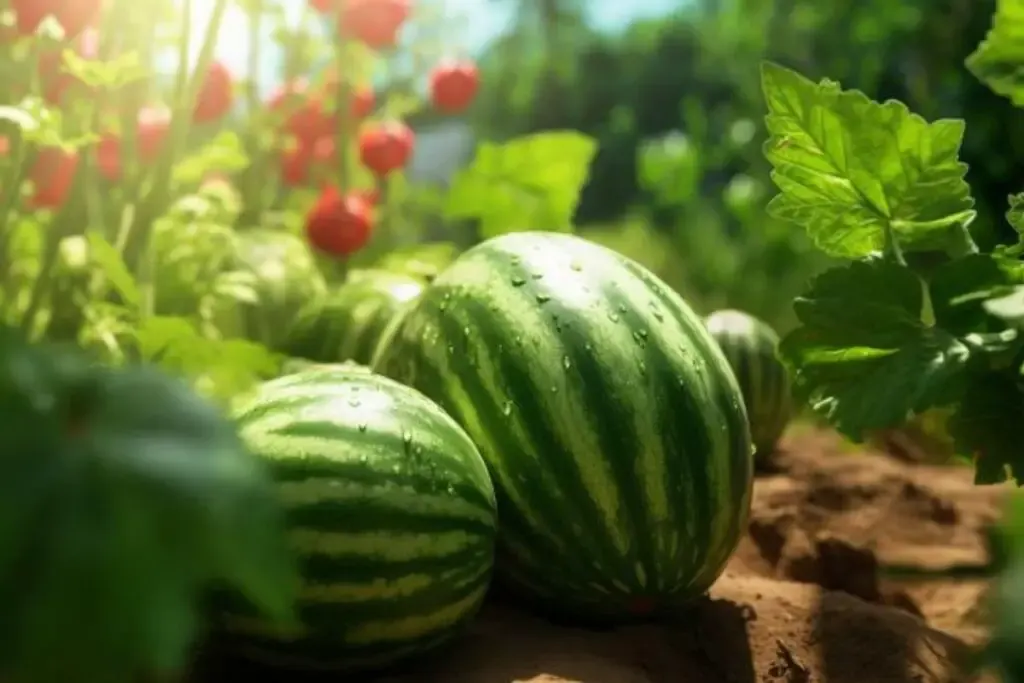
Growing watermelon in your own garden comes with a plethora of benefits, and today, I’m going to highlight three of my favorites.
First and foremost, the taste of a homegrown watermelon is incomparable. The sweetness, the juiciness – it’s like a burst of summer in every bite. When you grow your own watermelons, you have control over the growing conditions, ensuring that your fruit is as tasty as possible.
Secondly, growing watermelon can be a fantastic learning experience, especially if you have kids. It’s a chance to teach them about the gardening process, from planting seeds to harvesting fruit. Plus, watching a watermelon grow from a tiny seed to a large fruit is incredibly satisfying.
Last but not least, watermelons are excellent for your health. They’re packed with vitamins, minerals, and antioxidants, and they’re also a great source of hydration. When you grow your own watermelons, you can enjoy these health benefits right from your backyard.
My Favorite Watermelon Varieties
As a gardening enthusiast, I’ve had the pleasure of growing various watermelon varieties over the years. Each variety has its unique characteristics and flavors, and it’s always exciting to taste the fruits of your labor after a season of care and patience.
Here, I want to share with you three of my all-time favorite watermelon varieties that have consistently delivered both in flavor and performance.
1. Sugar Baby
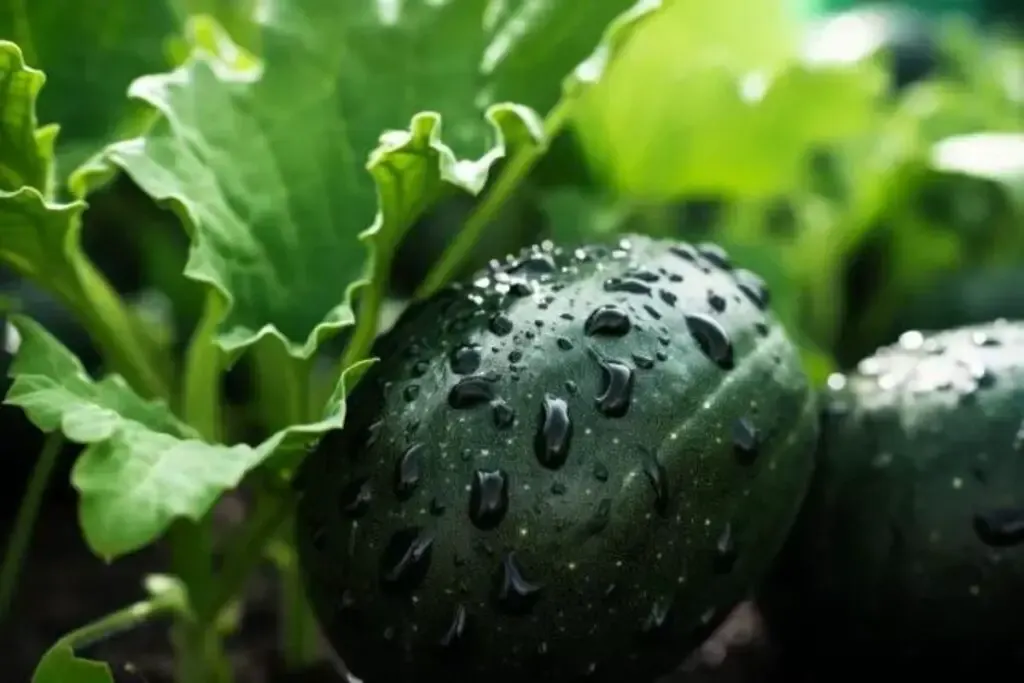
This variety holds a special place in my heart. Sugar Baby watermelons are small, round, and boast a dark green rind. What they lack in size, they make up for in flavor. The flesh is a vibrant red with a sweetness that is just unparalleled.
These melons are perfect for small gardens or even container gardening due to their compact size. One of the perks of growing Sugar Baby is that it matures quickly, usually in about 75 days, allowing you to enjoy your harvest sooner.
2. Carolina Cross
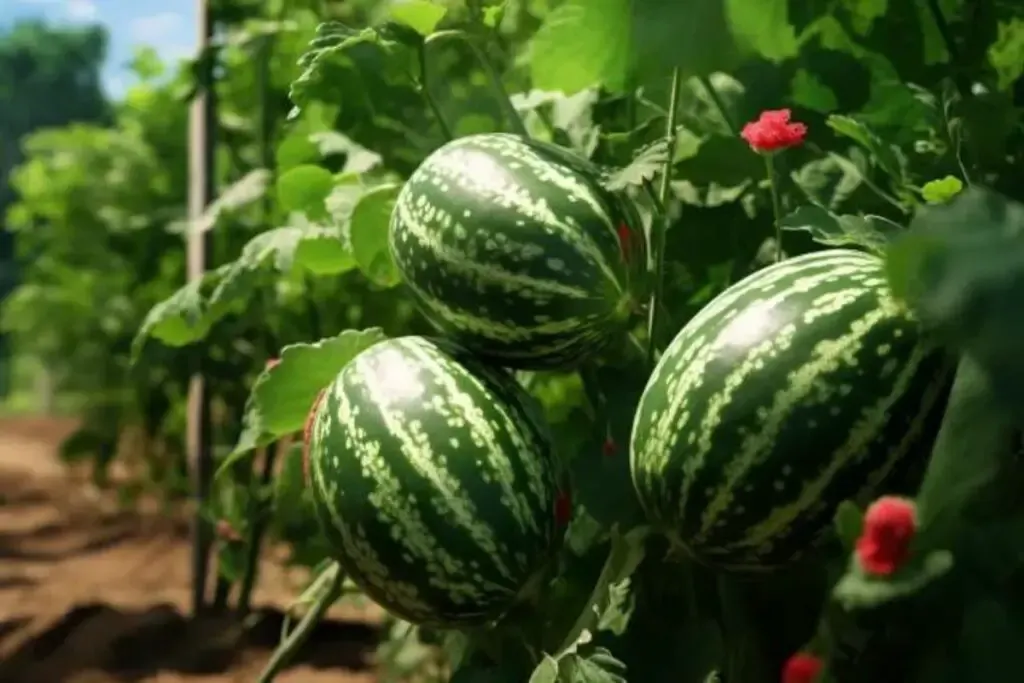
If you’re looking to grow a giant watermelon, Carolina Cross is the variety for you. This variety is known for producing massive fruits, with some even reaching over 200 pounds! The skin is a light green, and the flesh is bright red, sweet, and juicy.
Growing Carolina Cross can be a fun challenge, and it’s always rewarding to see just how big your melon will get. Keep in mind that these giants require plenty of space to grow, so make sure you have ample room in your garden.
3. Moon and Stars
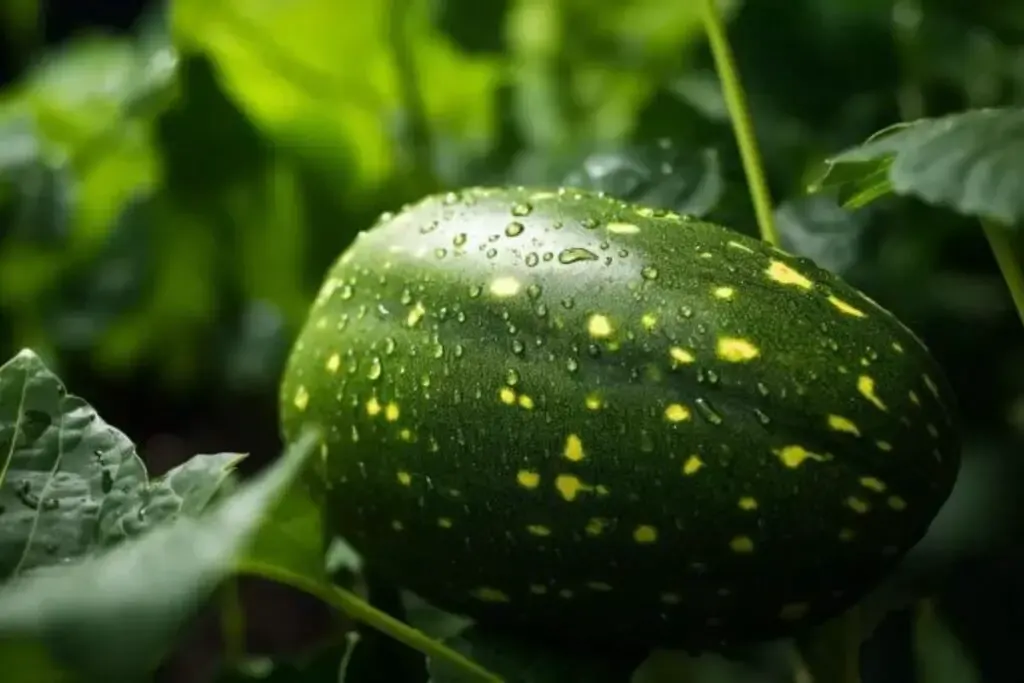
This variety is not only delicious but also visually stunning. The Moon and Stars watermelon is named for its unique rind pattern, featuring one large yellow “moon” and numerous smaller “stars” scattered across a dark green background.
The flesh is deep red, sweet, and succulent. Growing Moon and Stars watermelons is like growing a piece of art, and they always become a conversation piece among garden visitors.
Watermelon Care
Successfully growing watermelons requires a bit of know-how, but don’t worry—I’m here to guide you through each step of the process.
Planting
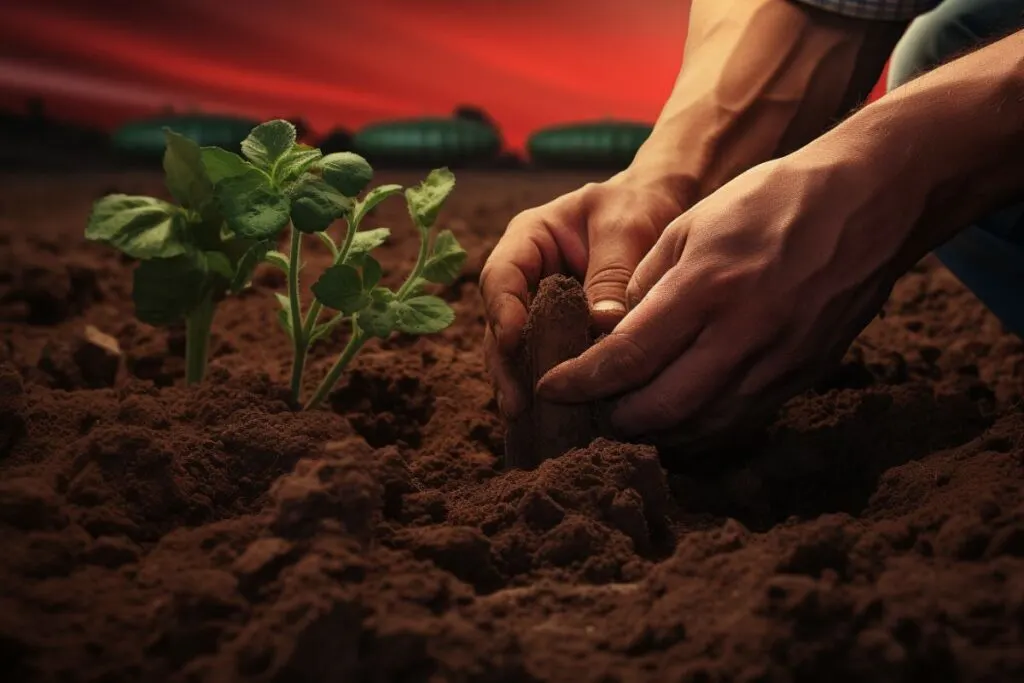
To start, choose a sunny spot in your garden as watermelons love the heat. You can plant seeds directly in the ground or start them indoors in pots if your growing season is short.
Plant the seeds about an inch deep in the soil and space them about 2 feet apart. If you’re planting rows, keep them 8 to 10 feet apart to give the vines plenty of room to spread.
Light
Light is crucial for watermelon growth. Choose the sunniest part of your garden, as watermelons need full sun – we’re talking about at least 6-8 hours of direct sunlight daily.
This is one of the secrets to getting those sweet, ripe melons. In areas with less intense sun, it’s still possible to grow watermelons but be prepared for a longer maturation period. If your garden has partial shade, don’t despair; just be mindful that it may slightly impact the sweetness and size of your fruits.
Soil
For watermelons to thrive, the soil plays a key role. These juicy fruits prefer well-draining, fertile soil with a slightly acidic to neutral pH. Before planting, I like to enrich the soil with compost or well-rotted manure, which provides essential nutrients for growth.
Also, ensure the soil is loose and not compacted, as watermelon roots need room to spread. In my experience, adding organic matter not only improves soil fertility but also helps retain the right amount of moisture, which is crucial for watermelon development.
Water
Watermelons are made up of 92% water, so it’s crucial to keep the soil consistently moist, especially during the growing period. Water the plants deeply once a week, providing about 1-2 inches of water. Avoid overhead watering to prevent diseases and make sure the soil at the root level is moist. As the fruit starts to ripen, you can reduce watering to help intensify the sweetness.
Temperature and Humidity
Watermelons love warm temperatures, with the ideal range being between 70°F and 90°F. They can be quite sensitive to cold, so make sure to plant them after the last frost date in your area. High humidity can lead to fungal diseases, so it’s important to water at the base of the plant to keep the foliage dry and ensure good air circulation.
Fertilizer
Fertilizing is an essential step in growing healthy watermelons. Start with a balanced fertilizer when you plant your seeds or seedlings. As the plants grow, I switch to a high-phosphorus, low-nitrogen fertilizer to encourage fruit development.
Over-fertilizing, especially with nitrogen, can lead to lush foliage at the expense of fruit growth. I’ve found that a consistent, moderate approach to fertilizing yields the best results – ample fruits without overwhelming the plant.
Harvesting Watermelon
Ah, the fruits of your labor! Knowing when to harvest your watermelon is crucial for getting that perfect sweet taste. A watermelon is ready to be picked when the tendril closest to the fruit has turned brown and dried up.
The bottom of the watermelon, where it sits on the ground, should also turn from a light green to a yellowish color. Give the watermelon a tap; a deep, hollow sound means it’s ripe and ready to be picked. If it sounds more like a thud, give it a few more days.
Pruning
Pruning watermelons can seem counterintuitive, but it’s a valuable step for healthier plants and better fruits. I recommend removing any dead or diseased foliage as soon as you spot it. Additionally, thinning out some of the vines can improve air circulation and reduce the risk of disease.
Focus on allowing the main vine to grow strong and support a few healthy offshoots for the best fruit production. Remember, the goal is to direct the plant’s energy into growing a few high-quality melons rather than many smaller, less flavorful ones.
Propagating
Propagating watermelons is typically done through seeds. While you can save seeds from a watermelon you’ve enjoyed, be aware that if it’s a hybrid variety, the offspring may not be true to the parent plant. For consistent results, purchase seeds from a reputable source.
Starting seeds indoors can give you a head start on the growing season, especially in cooler climates. Once the seedlings are strong enough and the danger of frost has passed, transplant them into your garden, following the spacing guidelines to give each plant enough room to flourish.
How to Grow Watermelon From Seed
Growing watermelon from seed is a rewarding experience. Start by soaking the seeds in water for a few hours to help expedite germination.
Plant the seeds in a sunny, well-draining location, sowing them 1 inch deep in the soil. Watermelons require a long growing season, so if you live in a cooler climate, you may want to start the seeds indoors and transplant them outside once the weather warms up.
Growing in Pots
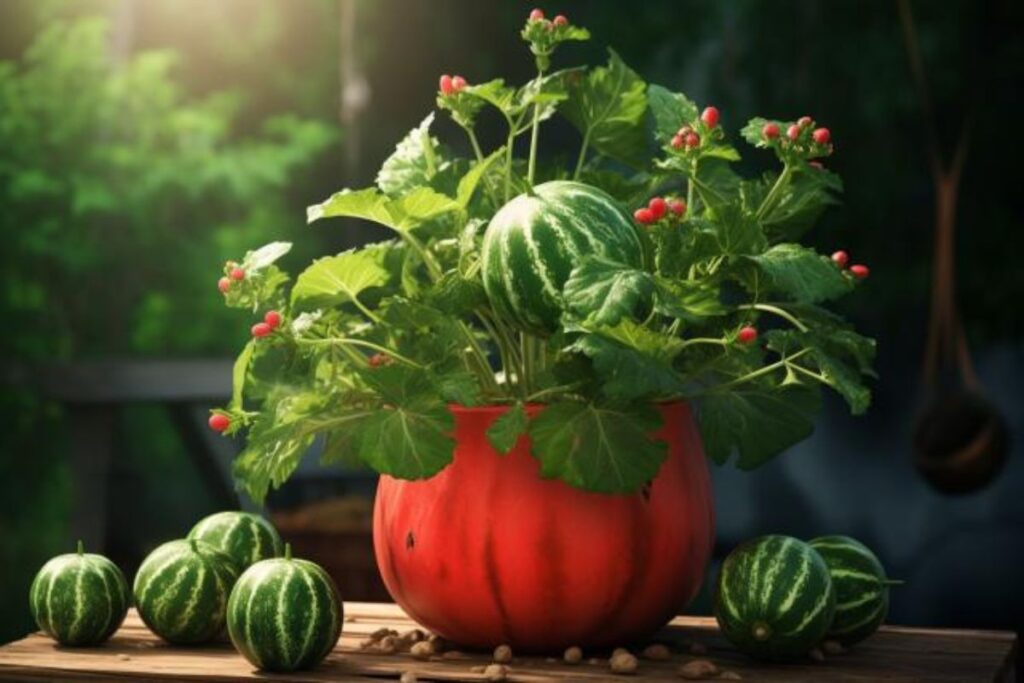
Don’t have a lot of space? No problem! Watermelons can be grown in pots. Choose a large pot (at least 5 gallons) with good drainage. Use a high-quality potting mix and plant one or two seeds per pot.
Make sure to place the pot in a location that receives plenty of sunlight and water regularly. Keep in mind that watermelons have large vines, so you may need to provide support or choose a compact variety.
Overwintering
Watermelons are warm-season crops and do not fare well in cold temperatures. In fact, frost can be detrimental to watermelon plants. Thus, overwintering watermelons is not a common practice. However, in regions with mild winters, you might be able to extend the growing season a bit by providing your plants with protection like frost cloths or cold frames.
If you live in an area with harsh winters, your best bet is to start fresh each spring. You can collect seeds from your previous harvest to plant next season, ensuring a new crop of delicious watermelons when the weather warms up.
Transplanting
Watermelons typically prefer to be sown directly in the ground, as they have delicate root systems that can be easily disturbed by transplanting. However, if you choose to start your seeds indoors to get a jump on the growing season, be sure to transplant them carefully.
When transplanting, try to disturb the roots as little as possible. Plant the seedlings at the same depth they were in their pots, and water them well after planting to help settle the soil and reduce transplant shock. Be sure to harden off the seedlings by gradually exposing them to outdoor conditions over a period of a week or so before planting them in the ground.
Common Pests & Diseases
Like all plants, watermelons are susceptible to a variety of pests and diseases. Some of the most common pests include aphids, cucumber beetles, and spider mites. These pests can be managed with insecticidal soap or neem oil, or by introducing beneficial insects like ladybugs to your garden.
Diseases such as powdery mildew, downy mildew, and anthracnose can also affect watermelon plants. These diseases thrive in wet conditions, so be sure to water your plants at the base rather than from overhead to keep the foliage dry. Proper spacing and pruning can also help improve air circulation and reduce the risk of disease.
If you notice signs of pests or disease, act quickly to manage the issue before it spreads. Regularly inspecting your plants and providing them with proper care can help keep them healthy and reduce the likelihood of problems.
By being vigilant and proactive in your gardening practices, you can enjoy a bountiful harvest of delicious, homegrown watermelons.
Happy gardening!

